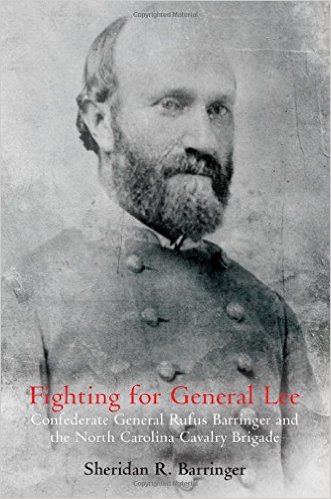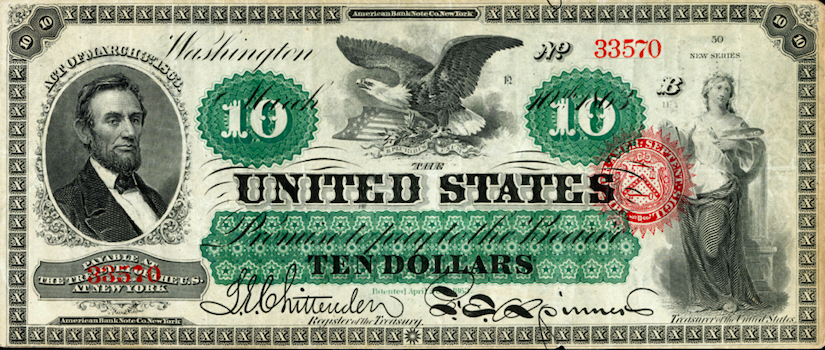Fighting for General Lee: Confederate General Rufus Barringer and the North Carolina Cavalry Brigade by Sheridan R. Barringer. Savas Beatie, 2016. Hardcover, ISBN: 978-1-61121-262-4. $32.95.
 Among Confederate cavalry leaders, the name Rufus Barringer does not have the familiar ring of J.E.B. Stuart, Wade Hampton, Nathan Bedford Forrest, or John Hunt Morgan. This new biography seeks to rescue him from obscurity. Written by Sheridan R. Barringer, a collateral descendant of the general, Fighting for General Lee introduces readers to an esteemed battlefield commander, and a former Confederate willing to embrace Reconstruction.
Among Confederate cavalry leaders, the name Rufus Barringer does not have the familiar ring of J.E.B. Stuart, Wade Hampton, Nathan Bedford Forrest, or John Hunt Morgan. This new biography seeks to rescue him from obscurity. Written by Sheridan R. Barringer, a collateral descendant of the general, Fighting for General Lee introduces readers to an esteemed battlefield commander, and a former Confederate willing to embrace Reconstruction.
Rufus Barringer was born in 1821 to a respected North Carolina family. As a student at the University of North Carolina and as a young lawyer, he sowed his share of wild oats, including fathering two sons with a neighbor’s slave. During the 1850s, he experienced a religious conversion and became a devout Presbyterian. Like many of his fellow western North Carolinians, Barringer was a staunch Whig in his politics, considering himself “a born Whig reformer” (20). As a state legislator, he enthusiastically backed railroad construction, education reform, and free suffrage.
As with many Southern Whigs, Barringer opposed secession until Lincoln’s call for troops to suppress the rebellion. Once his Tar Heel State seceded, he cast his lot with the Confederacy, recruiting what became Company K of the 1st North Carolina Cavalry. Barringer’s regiment served in most of the Army of Northern Virginia’s campaigns, earning a reputation as a crack outfit, of which J.E.B. Stuart boasted “there is not a better regiment in either army” (113). Despite his capabilities as an officer and his active service, Barringer remained a captain for more than two years before he began rising in rank. He fought in the epic cavalry clash at Brandy Station, surviving a painful wound when a bullet struck behind his upper jaw and knocked out many of his front teeth. Barringer missed the rest of the Gettysburg Campaign, but he and his Tar Heels saw plenty of action during the Bristoe Campaign, the Overland Campaign, and the Siege of Petersburg. During this time he finally rose in rank, becoming first the colonel of his regiment and then a brigadier general in charge of his own cavalry brigade—compromised of the 1st, 2nd, 3rd, and 5th North Carolina cavalry regiments.
Rufus Barringer’s share of the fighting ended in the early stages of the Appomattox Campaign. Following the Confederate defeat at Five Forks and the collapse of the Petersburg defenses, Barringer made a desperate, rear guard stand with his brigade at Namozine Church on April 3, 1865. As his troopers gave away under an onslaught of hard-charging Union cavalry, a party of Sheridan’s scouts disguised in Confederate uniforms captured Barringer. Three days later at City Point, he made the acquaintance of none other than Abraham Lincoln who, as it turned out, had shared a desk in the House of Representatives with Daniel Moreau Barringer, Rufus’s older brother and a fellow Whig congressman. Lincoln gave Barringer a note for Edwin Stanton, asking the Secretary of War to make the captured general’s confinement as tolerable as possible, an act of kindness that greatly moved him.
The significance of family and professional connections in Civil War America stands out in this biography, and not only in the case Barringer’s chance meeting with President Lincoln. Through his 1854 marriage to Eugenia Morrison, Rufus Barringer became brother-in-law to future Confederate generals Thomas J. Jackson and Daniel Harvey Hill. Among the highlights of the biography is the author’s description of an audience Stonewall Jackson held with then Captain Barringer in July 1862. Jackson outlined for his kinsman a vision of Confederate strategy calling for flying columns of troops—“thunderbolts of war”—capable of harassing Union armies or even taking the war into the North (93). Ultimately Jackson’s stratagem failed to materialize, yet the general’s confidence in a junior citizen solider such as himself impressed Barringer nonetheless.
Rufus Barringer returned to postwar politics as a reformer; like James Longstreet, John S. Mosby, and a handful of other ex-Confederates, he joined the Republican Party during Reconstruction—earning the ire of Lost Cause stalwarts such as Jubal Early and D. H. Hill. Barringer endorsed black voting rights and other Republican reforms, a stance that he attributed significantly to his positive exposure to “the character of Yankee society, and the workings of the Yankee Institutions” during his time as a prisoner of war (249).
This biography not only fleshes out the career of a notable Confederate officer but also helps the reader understand the times in which Rufus Barringer lived. Sheridan Barringer’s text offers solid coverage of antebellum and Reconstruction politics in North Carolina and military operations in Virginia, making the book accessible to readers from a variety of backgrounds. As a Tar Heel cavalryman, much of Rufus Barringer’s fighting took place on the fringes of the armies, in often unsung skirmishes and campaigns. As a result, this work should be of especial value to students of Civil War cavalry operations and the Eastern Theater. Taken together, Fighting for General Lee offers a compelling exploration of an extraordinary man and the exceptional age in which he lived.
Jonathan M. Steplyk received his Ph.D. in History at Texas Christian University and teaches as an adjunct instructor at both TCU and the University of Texas at Arlington.
